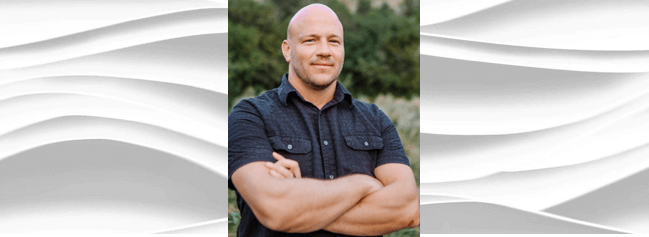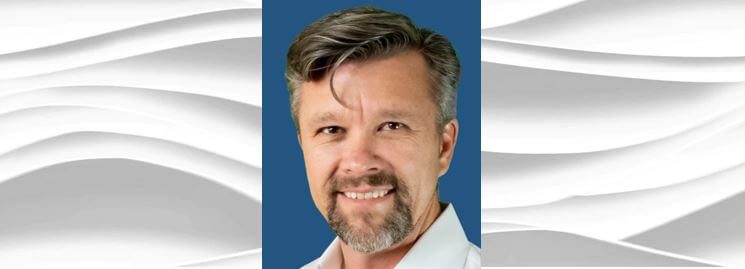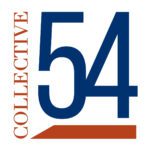Jeff Pedowitz, CEO of The Pedowitz Group, was one of the pioneers of the SaaS era by driving adoption of marketing automation technology from Eloqua, Marketo and others. This allowed his firm, The Pedowitz Group, to dominate his niche for almost two decades. Now, Jeff sees the next big wave, AI, and he shares with Collective 54 how to ride it all the way to the bank.
TRANSCRIPT
Greg Alexander [00:00:10] Welcome to the ProServe Podcast, a podcast with leaders of thriving boutique professional services firms. For those that are not familiar with us, Collective 54 is the first mastermind community focused entirely on the unique needs of ProServe firms. My name is Greg Alexander. I’m the Founder and I’ll be your host today. On this episode, we’re going to talk about A.I. artificial intelligence and its impact, in particular around B2B sales and marketing and overall revenue generation. And we have a fantastic role model today, and his name is Jeff Pedowitz and he’s fantastic for a reason, and are many reasons, I should say. But the one that is relevant to today’s topic is the last time we had a major tech wave was the SaaS wave, and Jeff was a pioneer in that space. He and a very small number of people I believe, can claim attribution for the mass adoption of marketing automation. And having gone through that entire journey all the way from a nascent industry to maturity, which it is today, his perspective is profound, and I think he can take those lessons and apply them to AI because it’s early, early days there, and he maybe more than most, can probably share with us where this might be headed. And what we hope to accomplish today is by listening to that story and applying past lessons to new tech, maybe we can get ahead of the curve, learn to learn a few things, and maybe profit from them. So, Jeff, it’s great to see you. Would you mind introducing yourself and your firm to the broader audience, please?
Jeff Pedowitz [00:01:59] Sure thing. Greg, good to see you too and thank you for having me back. So I own the Pedowitz Group and we are a sales and marketing consulting company. We work with sales and marketing leaders who want to drive more revenue and we specialize in digital channels. And of course, AI is probably the best emerging digital channel we’ve seen in quite some time.
Greg Alexander [00:02:21] Yeah. And I understand that you just did a bunch of homework on a new book that you got coming out in just a couple of weeks. What’s the title of the book?
Jeff Pedowitz [00:02:27] It’s called The AI Revenue Architect. Great.
Greg Alexander [00:02:33] So why don’t you kind of give us the outline of what’s in the book and maybe we can use that as a framework for our talk today?
Jeff Pedowitz [00:02:39] Yeah, absolutely. So. Well, my job, my company’s job is to follow technology because that’s what our customers want us to do, is to implement technology so they can scale their sales and marketing engine. So AI and various components of AI have been around for several years now. It’s just this whole emergence now generated by AI and what that Open AI platform are doing are bringing it into the mainstream and really starting to help a lot more people visualize the tremendous possibilities. As I start to think about this and the problems that my company and I have been solving for the last 16 years. There are still systems are still siloed. There’s data that’s everywhere. And people spend more and more and more on technology and data, but they still can’t run sales and marketing any more effectively than they could 15 years ago. They just have a lot more tech now to deal with it. So as I started thinking about the potential of AI, the first thing I wanted to do was really just help companies solve their problems better. And so the book introduces a concept called Rain, and that name was chosen intentionally because in sales, of course, we’re always trying to make it rain. But in this case I took Matt and it really stands for a Revenue Artificial Intelligence Network. And what it does is it connects all your systems and processes both inside and outside through AI. So you can actually, through one single interface, actually start to direct and manage your revenue engine. So it controls scale.
Greg Alexander [00:04:15] Mm hmm. I love the acronym. So let me make sure I understand that. So Revenue Artificial Intelligence Network.
Jeff Pedowitz [00:04:23] Yes.
Greg Alexander [00:04:24] Okay. And the way that you just described it to me, I find myself wanting to apply past frameworks to it. So is it is it middleware in your perspective or is that an incorrect analogy?
Jeff Pedowitz [00:04:39] Well, in some ways, yes. Right. So it’s it could be taken into something like a Boomi or Mule Sox or automatic or any of these integration in all areas. But combining it with AI so that you can train the systems that you have. So even some of the routine, mundane tasks can be done quickly. But as that starts to supplant, you can actually be a lot more productive. So just some typical use cases we scoring, which is something that we had Eloqua pioneer back in 2004 for the first time, largely has not changed dramatically. Most of the input for sales marketing is made, scoring is manually derived. Well, I think we should get ten points for a website, visit it five points about an email or 17 points of view or a demo. And then the models are relatively rigid, and then we send over what I suppose to be qualified ways to scale sales based on this framework, grade spec and prioritize. But with A.I., you don’t actually need an artificial or an arbitrary model. It can actually analyze the real activities, the demographic data that customers really did to come up with a scientific data, factual-based model that will continue to sell, learn, and even more importantly, become more predictive. Wow. So that’s just one example of where AI can play a major role. There isn’t a sales and marketing person I know that loves cleaning up data. We love getting more data, but we don’t actually like going in and cleaning out fields and systems and building new segments and doing all that well. That’s another way that AI can actually do that, because once you train it on what data standards you want for your company, you can start doing that automatically. Content creation and response. No matter what sales methodology is in today’s modern B2B selling environment, our customers are 90% and 95% of the way through the sales cycle. This is not like what, Greg, when you and I are personally, I wish we could control everything. So that inherently puts us at a disadvantage. So if you can use AI to do more informed research on your prospect customer, write better correspondence, look at their content, come up with unique differentiators, anticipate possible objections your buyer might have, and be ready with response to be more proactive. You’re now starting to get ahead of the game.
Greg Alexander [00:07:09] Those are fantastic use cases. It’s causing me to creatively think about how to get them implemented. What I want I would like to do speak to you about a question I have here in my notepad is, you know, selfishly, I’m trying to help the members of collective 54. I know what you’re doing is much bigger than that. But in this particular case, about 85% of a proserve income statement. The expenses are labor. And so if you can replace labor with tech in theory anyways, you can significantly increase profit margins. Now, some people view that as a negative, you know, and a lot of the stuff you read about AI right now is all these scare tactics. But as a capitalist, I view that as a huge plus. I mean, if my members could take their workforce from 110 and keep the revenue the same, I mean they’re going to make a lot more money and scale a lot faster. So is that hype? Is that real? I mean, do you see the tech replacing humans?
Jeff Pedowitz [00:08:05] Well, it’s a little bit of both. I mean, it doesn’t outright replace humans. And it should be noted that we talk about AI as a general category. AI in its truest sense, means artificial intelligence, sentience, self-awareness, emotional awareness, what we’re all talking about, this general of AI, ChatGPT. It’s not that, it’s machine learning. Now it can take large amounts of data and it can learn quickly in a process to make decisions. But it’s not self-aware and has no emotional understanding. It doesn’t understand context. It doesn’t understand nuance. It is still just a tool in the hands of a skilled practitioner. So I view this as the third major generational change since I’ve been in the workforce. The first, of course, being the rise of the Internet. The second, the introduction of the smartphone. And now this. Now, when the Internet first came out and I got my first marketing job in college, I did catalog marketing the bank. There was no email. There was no Internet. There was no nothing. Did catalog marketing go away? No. Did two new digital channels come into play? Yes. Some people that were very skilled in direct mail moved over into email, digital channels and developed new skill sets. When the smartphone came out, it also introduced the whole new apps and mobile advertising and all new ways of doing things. So I think if you’re just doing simple, repetitive tasks and you’re not willing to adapt like any other moment in human history, if you don’t evolve, sure you will get left behind by an unknown space. AI doesn’t replace the human. It can’t because it’s not a human. It can make us a lot more productive. It can make us a lot smarter. And it can process things faster. So sure, it will introduce new margin providing that professional service owners can really think about how to apply it in the best way for their business. So let’s talk about some immediate practicalities. Almost all of us in professional services are doing research with our clients. We’re doing interviews, we have transcripts, We provide some kind of report or presentation that, well, today that takes a lot of manual activity. It requires our senior and junior people to crunch data and do that. Those tasks can be replaced by AI and done in seconds, which will free up more value added time for those professional people to add more quality insights based upon that data back to the client. Mm hmm. And you use AI. to automate the data gathering. So if you’re doing a subjective in-person interview today with your client and you have them, just go to a site, they fill out a survey, AI processes all that information in real-time, speeds up that discovery period, adds more value. Yes. So there are a lot of different ways that AI can enhance it, but I think it gets a little overhyped to say that it will replace.
Greg Alexander [00:10:55] Okay. So if I’m listening to this, my first thought is I need an AI strategy for my firm. I’m intimidated by that because it’s evolving. I mean, just just in the last 10 minutes, you’ve dropped more things on me that I knew were possible and that I’m imagining that pace of change is going to continue. So what do I do? I mean, how do I develop a strategy for myself and how do I keep it up to date?
Jeff Pedowitz [00:11:24] Well. Try not to make it bigger than it is. Right, because it’s going to keep evolving and changing. So if you can appreciate that this is a way of streamlining and take improving analytical capability processing. Make a list of your business today. Look at your operational things that you do, your sales things, your marketing, and then look at whatever your professional service on or whether you’re on an architecture firm or a law firm or you are on a consulting firm. What are the things that you’re delivering to your clients? Go back and look at your recipes, your statements of work, and say, okay, if I was going to just add AI to my things, what would that look like? How can I just improve my offering? If I was just to AI enable. Many of us have some type of maturity level, some type of tiered offering with our clients, could you take your top tier and introduce AI to it bigger and more advanced? Or conversely, could you introduce AI to your basic tier and make it more palatable for your prospects and clients and thereby lowering your cost of delivery and acquisition? And I would just start there. So build a simple spreadsheet and go through and that’s how you start to frame out a strategy. Don’t sweat about whether or not you got the right tools or not. Start off with something simple like ChatGPT or Bard, which are conversational and generational. Don’t get some. I mean, there are literally since the time you and I talked about doing this podcast, there’s been 500 applications that have hit the market, but only in the last month or so. But a lot of them are crap, you know, and a lot of them are just small little widgets. Don’t get to fall into that trap of getting consumed. Like you’ve got to go out and buy all this stuff. That’s not necessary. Use the free stuff.
Greg Alexander [00:13:15] If you think back to the two previous key changes of your career, the Internet, the smartphone, and now this. What did you with retrospection now, what did you learn from those two previous major moments that you think you can apply to this moment and allow you therefore to take advantage of this moment, maybe more than you did the previous two?
Jeff Pedowitz [00:13:36] Well, as an investor, I definitely wish I would have added that on some of those .coms, not the ones that last, but the ones that I really I, you know I think that I would have gotten involved sooner and incorporated it even much faster in the business. Well, the benefit of hindsight, I think, always makes us all more prescient. But in light of that. I reflect back on the earliest part of my career, I did not understand truly what the Internet was going to become. I had no. I mean, again, this is we’re talking early nineties, mid nineties here. There was no Google, no SEO. We had dialing with AOL and.
Greg Alexander [00:14:18] No one had any.
Jeff Pedowitz [00:14:19] I decided to hear that we got mail. So I’m certainly not going to claim I mean, certainly with the revision I could be a futurist, but at the time, no, I didn’t know. But I think I would have embraced it more and seen seeing where it’s gone. Same thing with a smartphone. I mean, when I first came out, I was I love my BlackBerry like everybody else. I was just like I was reluctant to switch over and what actually got me to do it is a good friend of mine, Dave Lewis, owned a rival firm. We were at some conference up in Toronto and he was showing me all the stock prices of his clients, his public clients that he was helping since he got involved on his smartphone. And I thought that was just the coolest thing, you know what I mean? Basically saying, Hey, what’s going on? Since we got involved this is what my clients are doing. So I went out and got the phone the next day, haven’t looked back. Yeah, but even then, you know, this first couple of years, you think about us here in the States, we would not even think about using it for banking. I know. And working out. I’m not going to have my information out there. I still got to go to the bank like everybody else and deposit my checks. But today, do any of us think twice about just aiming our phone somewhere? Those of you that are listening, I’m like aiming my virtual phone here. Now. I mean, so it’s changed, you know, we get it and it’s proven over and over again that as consumers, we will trade privacy for convenience. Yeah. So at first, what we’re reluctant to until we realize what we’re ever afraid of. So, yes, I mean, the concerns out there right now are real. And I don’t mean and I don’t want to minimize it in any way. I mean, there are definitely ethical concerns. There’s definitely a built in bias to some of these systems and tools. But that doesn’t mean that they still can’t be highly productive. And you just you know, you exercise with some common sense and some caution but today’s fears will be abated by tomorrow’s gains and productivity and the things that we’re going to be able to do because of AI are going to be mind-blowing. In fact, just like I mean, even though I’ve thought about a lot of things, there are so many things that we haven’t even possibly contemplated yet that are going to happen in the next 2 to 5 years because of this change in technology. And that’s the great thing about the human race, is our endless ability to create and to innovate.
Greg Alexander [00:16:33] Yeah, I agree. I mean, if you just think about the health implications of what we’re going to be able to do medically because of these tools, I mean, it’s amazing. And I’m with you. I think the the pros outweigh the cons tremendously. Okay. Well, we’re out of time here. So, Jeff, thanks for being here. Give us the name of the book again, because by the time this airs, we should be able to buy it. And I’m assuming you’re going to sell it on Amazon.
Jeff Pedowitz [00:16:55] You got it. The AI Revenue Architect.
Greg Alexander [00:16:58] Okay, very good. So I encourage everybody that’s listening to this to pick up a copy of that. Jeff is a qualified author, to say the least, so I’m sure it’s well-researched and well-written. Couple other things for you. Obviously, members, you should make sure you attend the Q&A session we’ll have with Jeff when that gets scheduled. You can ask your AI-specific questions to him at that point. If you’re not a member, of course I encourage you to do so. Go to Collective 54.com and apply and one of our reps will get in contact with you. If you want some more content, check out our newsletter Collected 54 Insights. You can find that on the website. And of course our book is called The Boutique: How to Start Scale and Sell a Professional Services Firm. You can find that on Amazon. But until next time, I wish you the best of luck as you try to grow, scale and exit your firm. Take care.










